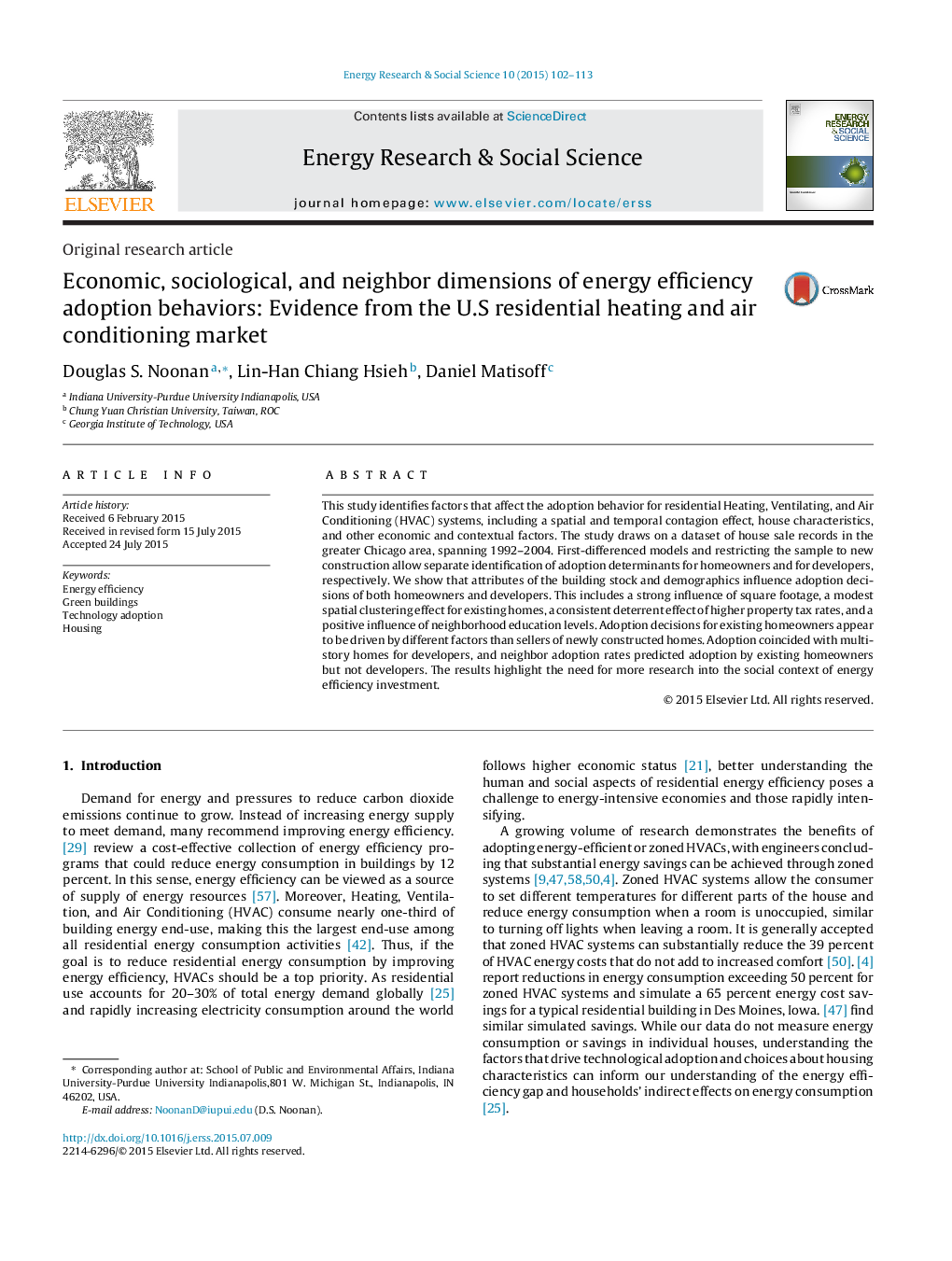| Article ID | Journal | Published Year | Pages | File Type |
|---|---|---|---|---|
| 6558542 | Energy Research & Social Science | 2015 | 12 Pages |
Abstract
This study identifies factors that affect the adoption behavior for residential Heating, Ventilating, and Air Conditioning (HVAC) systems, including a spatial and temporal contagion effect, house characteristics, and other economic and contextual factors. The study draws on a dataset of house sale records in the greater Chicago area, spanning 1992-2004. First-differenced models and restricting the sample to new construction allow separate identification of adoption determinants for homeowners and for developers, respectively. We show that attributes of the building stock and demographics influence adoption decisions of both homeowners and developers. This includes a strong influence of square footage, a modest spatial clustering effect for existing homes, a consistent deterrent effect of higher property tax rates, and a positive influence of neighborhood education levels. Adoption decisions for existing homeowners appear to be driven by different factors than sellers of newly constructed homes. Adoption coincided with multi-story homes for developers, and neighbor adoption rates predicted adoption by existing homeowners but not developers. The results highlight the need for more research into the social context of energy efficiency investment.
Related Topics
Physical Sciences and Engineering
Energy
Energy (General)
Authors
Douglas S. Noonan, Lin-Han Chiang Hsieh, Daniel Matisoff,
